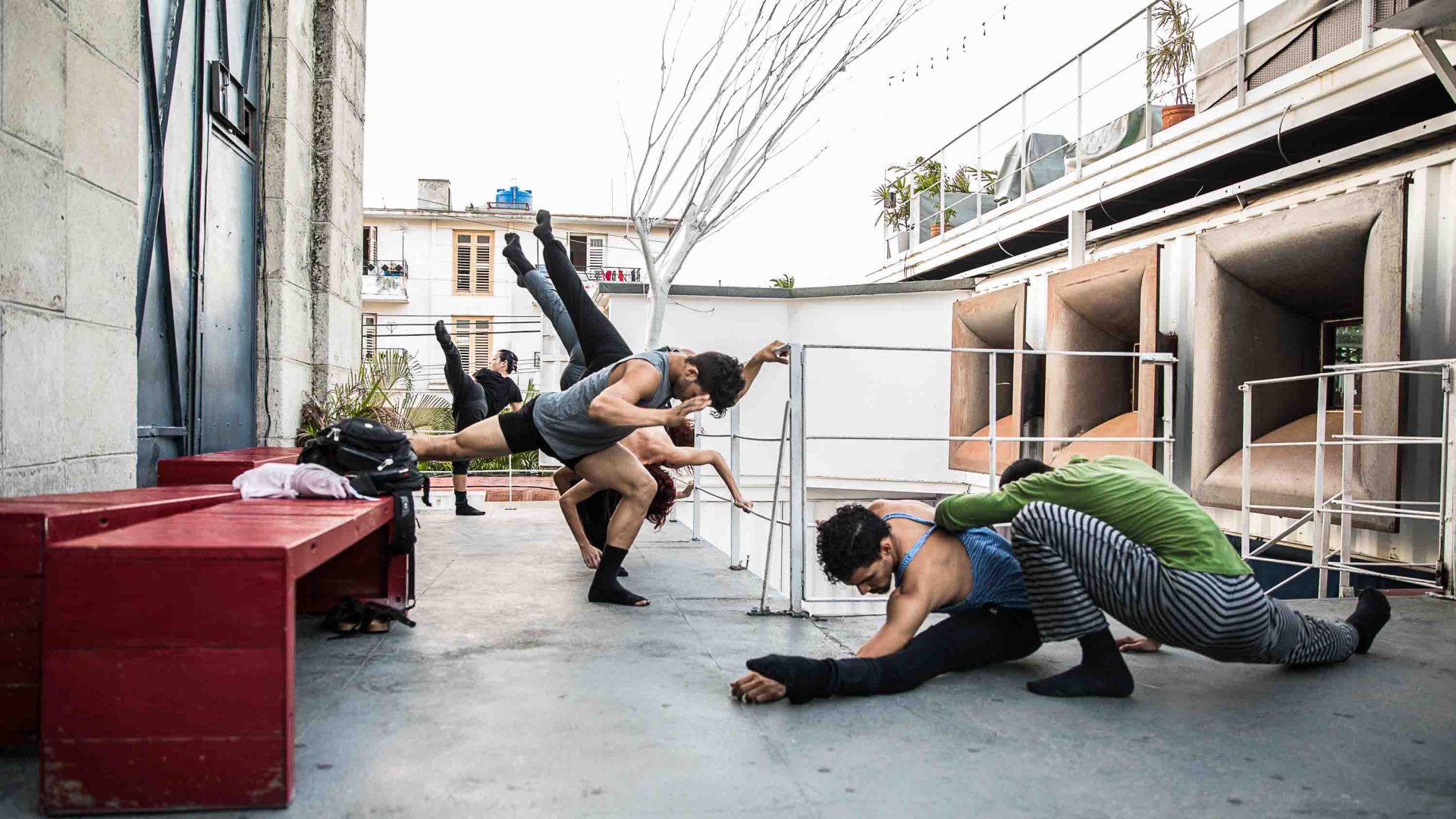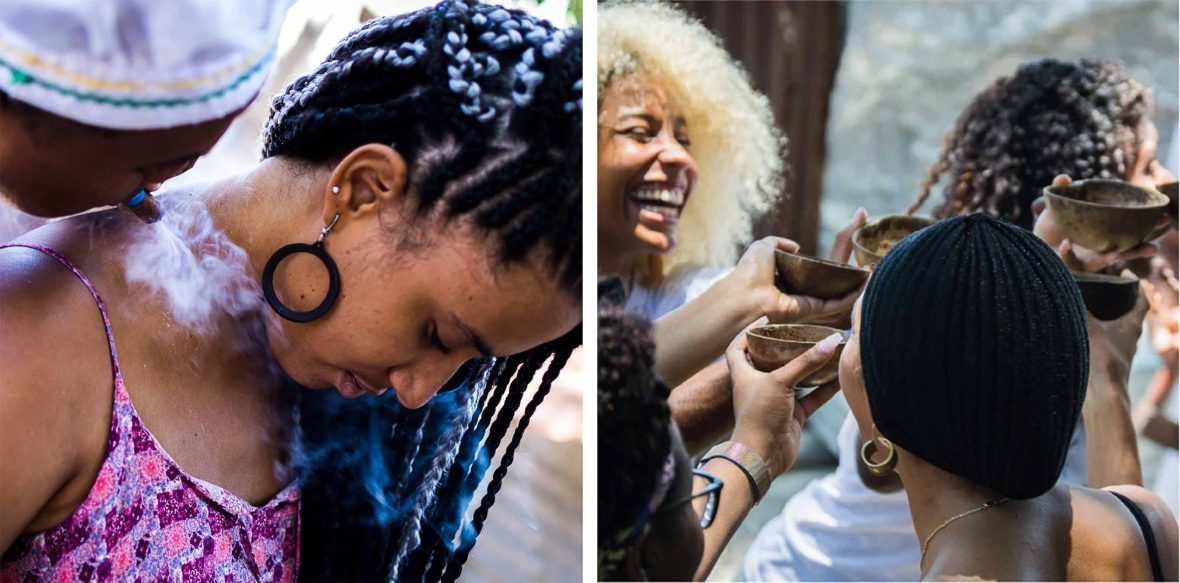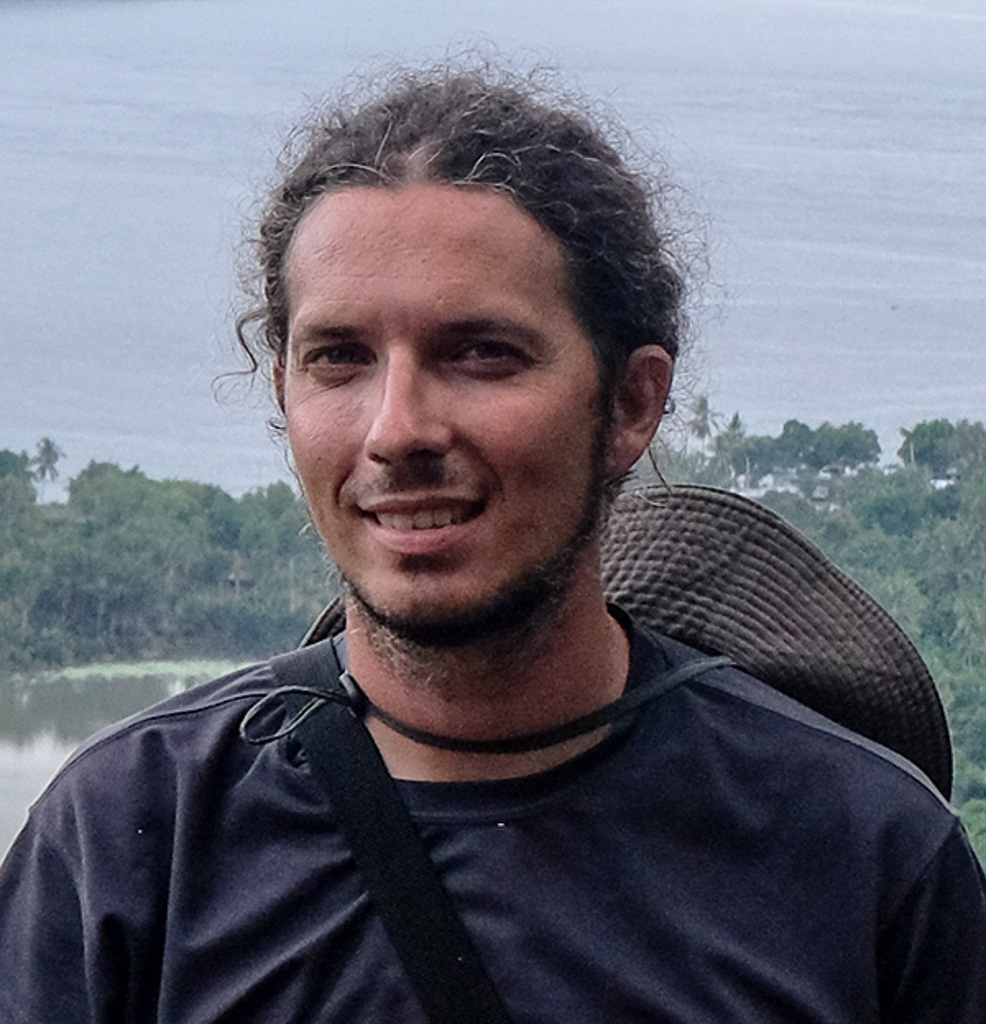
The Caribbean island of Cuba may be in crisis, but a new wave of entrepreneurs, restaurateurs and other creatives are innovating in Havana like never before, as Claire Boobbyer finds out in the Cuban capital.

The Caribbean island of Cuba may be in crisis, but a new wave of entrepreneurs, restaurateurs and other creatives are innovating in Havana like never before, as Claire Boobbyer finds out in the Cuban capital.
I dip my fingers into the bowl of cold water, milky white from powdered egg shell, and dab the liquid on my head, shoulders, knees and feet. I’m kneeling in front of Damián, a Cuban Babalawo, a priest of the Afro-Caribbean religion of Santería. He’s performing a cleansing ceremony to rid my body of negativity.
I feel lighter on my feet as I get up in his living room-meets-enormous religious sanctuary, stuffed with shells, necklaces, gourds, pots and ceramic elephants. Every item holds a meaning, and thanks to my experience with Beyond Roots, I’m given the full 101 by expert guide Endimo García, and Damián. Merging the beliefs of West African Yoruba with Roman Catholicism, I learn how West Africans brought to Cuba via the transatlantic slave trade from the 16th century were forbidden to practise their religions by Spanish colonial masters—and how Catholic saints proved to be a convenient disguise for Yoruba deities, known as orishas.
This tour, among others, is the brainchild of Adriana Heredia Sánchez, a professor of economics-turned-new business owner. We meet later at her store and hair salon to get the lowdown on doing business in crisis-hit Cuba “When I look back, I see a lot of evolution in Cuba. It’s slow, but it is evolving.”
Havana, the striking, complicated, Spanish-founded capital of Cuba, is at a critical crossroads. Abysmal economic times, record migration, high food prices, and slow tourism post-pandemic engulf the country. The city, too, is the capital of a country under the longest period of sanctions in the world: The 62-year-old US trade embargo against Cuba. Mind-boggling domestic hurdles stifle growth, too. The situation is so complex that “it has no name,” laments a despondent taxi-driving Habanero, the term for a Havana local. But even against this shambolic backdrop, a gathering of determined Habaneros thrives—and survives.

Adriana, in her previous life, taught economics at Havana’s university with an interest in Cuba’s financial system and entrepreneurship, but in 2016, she turned her attention to Cuba’s Black community and culture. What bothered her, increasingly, was that more often than not, the island’s Black history was missing from tourist circuits.
“I was uncomfortable that tours were very traditional with the classical and the colonial, but African culture is a very important part of Cuban culture,” she tells me as we sit in barber swivel chairs in her salon, the first Afro hair salon for the Black community in Cuba.
Between the 16th century until abolition in 1886, some 800,000 enslaved people from West Africa were brought to Cuba, resulting in a blending of cultures, food and religions. After Barack Obama’s détente, which eased hostility with the island in 2015, and the boom in tourism which followed, Adriana launched Beyond Roots tour company and created five immersive experiences on Airbnb.
In late 2010, President Raúl Castro rubber-stamped an opening for the nascent private sector … The number of self-employed on the island was 157,371 in 2010. By 2023, numbers had soared to 1,608,000.
Most Beyond Root tours head to Guanabacoa, a majority Black municipality of Havana, known as the ‘Cradle of Afro-Cuban culture’ to explore art, Afro-Cuban food, and music and dance of Santería, the religion which developed in Cuba from the 16th century.
Adriana also realized her tour guests would often ask for souvenirs. Spotting an opportunity, she opened a store for Black-made artisanal souvenirs in 2019 followed by the hair salon in 2020. This autumn, she’ll consolidate everything under one roof—the salon, store, tour hub, and a new café/bar—with the opening of Centro de las Raíces (Center of Roots), just off a popular Old Havana square.
Most travelers don’t think twice about signing up for a private cultural tour, but these types of tours are part of an evolving process for the island’s emerging independently employed. The job of private tour guide is actually prohibited in socialist Cuba, as are most professions such as doctors and core subject teachers.
In late 2010, President Raúl Castro rubber-stamped an opening for the nascent private sector. For example, Cubans could open smart (as defined by government inspections) 50-seater restaurants (previously limited to 12 seats), fancy rental apartments, cool cafés and even cooler bars. The number of self-employed on the island was 157,371 in 2010. By 2023, numbers had soared to 1,608,000.
Then, in 2021, the government authorized Micro, Small and Medium-sized Businesses (Micro, Pequeño y Medianas Empresas) known as MIPYMEs, and Local Development Projects (PDL), a private-state collaboration with social responsibilities.
Adriana converted the production side of Beyond Roots into a MIPYME. The government still controls the rules, but it’s a significant step for a nation where three million work for the state, the average monthly state salary is US$38.7, the economy contracted by 2 percent by the end of 2023, and inflation ran at 30 percent. As Adriana says, “I began as an entrepreneur seven years ago, and today I have a company, a company that has legal jurisdiction. Before, that was just a dream.”
The Centro de las Raíces is a PDL. So how did this all square with the rules about guiding? “Among our approved objectives as a PDL is offering educational experiences so that allows us to operate all the internet-offered experiences,” Adriana tells me. “Before PDLs were approved, we had a self-employment licence—as an organizer of weddings and events—and it did not explicitly say we could not guide.”
Red tape is nothing new in Cuba. In 1966, seven years after Cuba’s 1959 Revolution victory led by Fidel Castro, Cuban director Tomás Gutiérrez Alea released The Death of a Bureaucrat, a surrealist satire mocking Cuba’s stifling bureaucracy.
Forever untangling internal and external officialdom is the queer team behind Clandestina. Cuban graphic artist Idania del Río and executive director Leire Fernández opened the island’s first independent design store in 2015 by outwitting rules (private shops were not legal in Cuba then). They went on to become the first fashion brand in Cuba to launch an online store—a tactic that helped Clandestina survive the pandemic.
“The Fábrica is an oxygen bubble for artists and the Cuban public. In life, art is a necessity, it feeds the spirit.”
- Sandra Lopes, Fábrica de Arte Cubano
Clandestina’s store in Old Havana is bright with tees, totes, posters and clothes featuring unique designs and slogans. Its ‘Actually, I’m in Havana’ slogan famously mocked the island’s lack of wi-fi and inability to respond immediately to social media messages. It was December 2018 when Cuba became one of the last countries on earth to grant data roaming on mobile phones; wi-fi rolled out in 2015.
In a stifling hot landing of their office where the air con can’t be bothered to reach, I chat to the pair. “We lost 80 percent of our staff with the migration after the pandemic,” Idania tells me. “Our local market has left for the US and Madrid, and we also lost our tourist client base. Our sales are like nothing what they used to be, but there are many opportunities.”
More than a million Cubans—10 per cent of the population—left the island in 2022 and 2023 (one Cuban demographer puts the figure at 18 percent) winding the clock back 35 years in terms of population growth, the government confirmed in July.
“The reality here is not as pretty or as nice as you imagine. It’s very complex, very difficult, very contradictory,” Idania explains. “But there is also opportunity and an immense potential for people to grow here. It’s very hard to see that because every day you deal with constant challenges for everything, so it’s very hard to envision a better life, but it is happening.”
Doubling down, the duo opened La Carpintería this spring, a cavernous former carpentry workshop on the point of collapse. It’s now a mixed-use space for production, a new store, showcase for multiple Cuban fashion brands, second-hand clothing festivals, and a party space for catwalk shows and emerging hot music bands, in association with Cuban music magazine AM:PM.
I went with a friend to its Fashion Show Tokyo Jarayuku where Clandestina launched a limited edition Japanese collection. A DJ hit the decks and a Japanese chef cooked up a few snacks on the side. The atmosphere was electric when models sashayed down La Carpintería’s catwalk—in Clandestina’s freshly designed tees, kimonos, masks, heels, sandals and cute socks.
La Carpintería, leased from the Office of the City Historian for 10 years through a contract that took two years to finalize, is already shaking up the barrio with weekly events. “We’re in a super tough neighborhood in Old Havana. There is nothing to do here for teenagers, and for women like us,” says Liere. “So, we also want to offer a space for film, for yoga, and things with a social element, a jazz concert, art collection shows.”
So, what about President Biden’s new May ruling allowing US banks to offer remote accounts to Cuban businesses? Leire sighs. “We’ve spent years suffering this bad experience” [of not being able to onboard merchants like Shopify and Paypal]. There’s no obligation for US banks to trade with Cuban businesses with this announcement, though. “They don’t want to take the risk,” Leire says, “as US law might change again.”
Riding the rollercoaster and still sprinkling stardust is maker of dreams, the Fábrica de Arte Cubano (Cuban Arts Factory). The converted oil factory houses photo galleries, concert halls, exhibition spaces, bars, a restaurant and pop-up cafés, and it showcases theatre, dance, fashion and everything from classical music to hip-hop.
An acclaimed stalwart of Cuba’s cultural scene for 10 years, it pulls a multi-generational crowd and foreign visitors in their thousands each year. Over summer, it hosts 35 free culture workshops for more than 2,000 children. How do they do it? That’s what I ask husband-and-wife duo, Cuban rock musician X Alfonso and Sandra Lopes, FAC producer, who run the place.
“We support the farmers via direct monetary support from the groups so they can invest. People have built houses, outdoor kitchens, dining rooms. It’s incredible what has been possible in less than a year.”
- Amberly Alene Ellis-Rodríguez, REGLASoul
“We host 600-700 artists every three months,” X tells me as we sit in a bar made from abandoned shipping containers. “That’s three concerts per day, eight at weekends plus theatre, artists, fashion shows and designers. It’s never repeated, and no day is the same.”
So what is it that drives them? “The Fábrica is an oxygen bubble for artists and the Cuban public,” Sandra says. “In life, art is a necessity, it feeds the spirit.”
How does that work in the current circumstances, I wonder? “It’s difficult, now, as many artists have left the country along with our team members,” explains Sandra, “but we continue to search for emerging artists and creatives in the provinces which is difficult with getting transport to Havana but we try and facilitate this. We know we’re writing a chapter in history. We know we make a difference and we can’t give up.”
Changing lives, too, is musician Alexey Rodríguez of Cuban hip-hop duo Obsesión, and documentary film maker Amberly Alene Ellis-Rodríguez. The husband-and-wife team established ReglaSOUL and launched a farming and sustainability program in September 2023. “Our purpose is to provide sustainable solutions for disparities as experienced by the Afro-descendant people in our neighborhoods,” reads their mission statement.
I meet them at their base in Regla, a majority Black municipality of 44,000 people, and opposite Old Havana on the other side of city’s huge harbor. “ReglaSOUL is like a mutual aid organization,” Amberly says as we tour the apartment rooftop, leafy with coriander, basil, mint and lemon verbena. “Foreigners that come here learn from the Cubans, but they are also giving back directly by joining our programmes.”
Participants get their hands dirty, they meet farmers, healers and activists, all of African descent, enjoy a farm-to-table experience and collaborate with local kids in workshops. “We support the farmers via direct monetary support from the groups so they can invest,” Amberly explains. “People have built houses, outdoor kitchens, dining rooms. It’s incredible what has been possible in less than a year.”
“We’re also incentivizing the local community so they can start their own projects in the future and not be so reliant on government help,” Alexey is keen to point out.
Spearheading agricultural change, too, is Finca Vista Hermosa on the outskirts of Havana. I’m wide-eyed as I admire the size of hanging mangos, avocadoes, and the pig, goat and cow population on a farm tour, as guide Tania Romero Mena tells us about the animals and the finca’s produce sold to Havana restaurants, B&Bs and local villagers plus its Slow Food market held every three months.
After our farm-to-table lunch which features a delicious platter of goats’ cheeses, staff member Iris Fonseca Ibánez tells me the finca harnesses all the national mechanisms available. It’s a PDL and receives help from the UN Food and Agriculture Organization and an Italian development agency plus it partners with other local agricultural producers to create and grow its production of goats’ cheese, buffalo mozzarella, yoghurt, fruit and veg. Last year, it produced 20 tonnes of cheese.
Back in Havana, I stroll the tree-lined streets of El Vedado barrio with its mansions and Art Deco towers looking at a different kind of produce: Small private kiosks have sprung up in front yards and in porches, selling everything from sugar to detergent, shampoo and biscuits. They’re the kind of corner store/hole-in-the-wall you find all over the world. In Cuba, they’re a lot newer, and debuted with the Mipymes post-pandemic. “Two years ago, Cuba didn’t have this,” says Raulito Bazuk, chef and owner of restaurant Grados, as I take one of his expanded food tours of the ‘hood. “We had to buy from government stores, and now, if you have money, you can buy from these.”
Our next stop is unsigned, but through the door is what could only be described as a deli. Cured meats hang from the ceiling, mango yoghurt drink is sold in the fridges, and local cheese, honey and eggs are handsomely displayed. Bodegón21 contrasts with poorly supplied government-run stores. “Now you have choice,” says Raulito. “If you have the money and you like good quality food, you can come here.”
Those with money include business owners, B&B owners, taxi drivers, and those who receive remittances from abroad, Raúlito explains. Most Cubans are without access to hard currency, and survive on dwindling ration book staples, help from family and friends, and what they can afford at the agricultural market where prices are rising. As Raulito and I pick up sweet potato, fat avocados and tomatoes from an agricultural market, he says: “I say Cuban food does not exist because people are not cooking it; People are not eating it because they can’t afford it.”
Back at his fine diner, we sip on his Garapiña (fermented pineapple with aged Havana Club rum) and I’m served ‘Cuban American chicken’ pimped up with Habanero chilli for lunch, all washed down with cheap Cuban mint liquor that cools my mouth. “We call it ‘Cuban American’ because we are exporting people to the US and importing chicken from the US. We are changing people for chicken,” Raulito confirms. A loophole in the US trade embargo allows for food sales to Cuba. Some US$282 million (and 90 percent) of US food exports to Cuba in 2023 were chicken products.
As the rum cocktail kicks in, Raulito tells me about new music sessions in his kitchen, his plans to bottle his homemade drinks, and the mood in Havana. “There’s a lot of people doing great stuff right now. I don’t know how we do it,” he says. “But as many people that are leaving, there are as many people staying here and going harder at it. People are still making this country thrive. It is what matters the most.”
****
Adventure.com strives to be a low-emissions travel publication. We are powered by, but editorially independent of, Intrepid Travel, the world’s largest travel B Corp, who help ensure Adventure.com maintains high standards of sustainability in our work and activities. You can visit our sustainability page or read our Contributor Impact Guidelines for more information.


Can't find what you're looking for? Try using these tags: